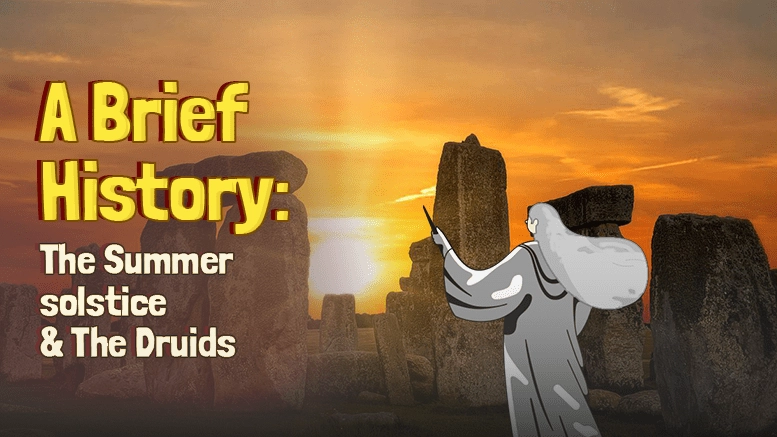A Brief History: The Summer solstice & The Druids
06/21/2022
For many, the Summer solstice is simply the longest day of the year, and the shortest night. But, for those who still belong to or have a keen interest in Druidry/Druidism, this day has a lot more significance, wonder, and mystery surrounding it. This is the brief history of Stonehenge and its ancient affiliation with the Druids…
Who were the Druids & what is Druidry/Druidism?
A druid (Welsh: derwydd; Old Irish: druí; Scottish Gaelic: draoidh) was a member of the high-ranking professional class in ancient Celtic cultures. There is a lot of mystery shrouding the actual history of the Druids, as our knowledge is based on limited records. Druidism is thought to have been a part of Celtic and Gaulish culture in Europe, with the first classical reference to them in the 2nd century BC.
Their practices were similar to those of priests today, connecting the people with the gods, but their role was also varied and wide-ranging, acting as teachers, scientists, judges and philosophers.
All aspects of Druidism were well structured and ordered; from the hierarchy of the Druid class, to their pattern of life that followed nature’s cycles. They observed lunar, solar and seasonal cycles and worshiped according to these on 8 main holy days.
What was their relationship with the Summer solstice & Stonehenge?
All aspects of Druidism were well structured and ordered; from the hierarchy of the Druid class, to their pattern of life that followed nature’s cycles. They observed lunar, solar and seasonal cycles and worshiped according to these on 8 main holy days: Samhain, yule, Imbolc, Ostara, Beltane, Litha, Lughnasa, and Mabon.
As far as the solstices are concerned, there are two key holy days: Yule & Litha. Yule was the Winter solstice, a time when Druids would sit on mounds of earth, throughout the night, waiting for sunrise. This is when they believed they would be reborn. Litha, on the other hand, was the summer solstice, a time when they believed that the ‘holly king’ took over from the ‘oak king’ of Yule.
Their places of worship (‘Temples of the Druids’) were quiet, secluded areas, like forests, and stone circles. The most famous of which, being Stonehenge, an ancient megalithic monument dating back to about 2400 B.C. Though it is not yet known who built Stonehenge, it is indeed thought that this was a place of worship for them. This is still the case today for pagans and other neo-druids.
Archeologists have long debated the purpose and uses of Stonehenge. The site is aligned so that the sun can be viewed rising in the north-east behind the Heel Stone. It is thought to be no coincidence that the sunset can also be viewed setting in the south-west from the center during the Winter solstice.
